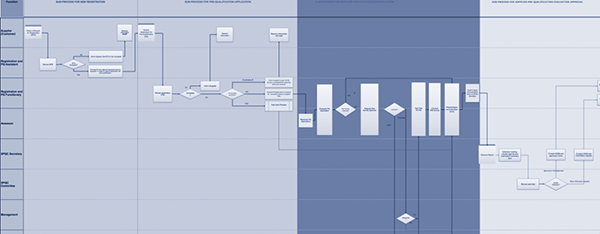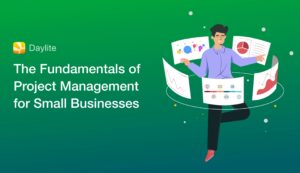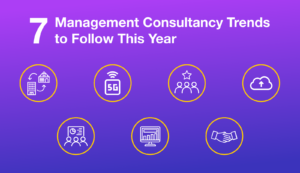
We’re all looking for ways to maximize our time and efficiency. Sometimes we test out a new strategy, and sometimes we’re unsure of what strategy to even consider implementing. This is when management consultants like Steve McGrady are brought in to save the day. Steve works at Cambridge Management Sciences, an evidence-based management consultancy that uses proven methods and tools to improve strategy delivery and operational effectiveness. Cambridge Management Sciences has commercial, non-profit, and government clients in the UK, Europe, the Americas, and the Middle East. They have managed and advised on a range of complex business transformation and change programmes in Financial Services, Energy, Logistics and Government sectors. Steve has been a Daylite customer for over 10 years. We asked Steve how Daylite has improved his business, and some tips and tricks he’s learned over the years for helping other businesses.
 Most Rewarding Part of the Job
Most Rewarding Part of the Job
The best part of my job is the lack of routine. That was one of the reasons I left the corporate world to become a consultant. The other great part about my job is being able to continue to learn and bring new ideas. We’ve now been running for over 12 years and can look back on previous assignments and demonstrate that we’ve made a difference. We can see changes in clients’ businesses as a result of what we did.
Workflow Before Daylite
We’ve been using Daylite for over 12 years. The main word that comes to mind about our workflow before Daylite is “disconnected”. We had emails in one place, calendar in another, and contacts scattered around various systems. Everything else was individual files, or notes written on paper. It was very difficult to keep track of everything. We used to lose sight of business opportunities because there was too much information spread across different places.
Favourite Daylite Feature
Our starting point is Daylite Mail Assistant. Most of our work is driven by email so the workflow now is all driven by the inbox with the Daylite Mail Assistant pane alongside. From an email we decide what action needs to be taken, whether it’s book an appointment, create a task, delegate a task, or create an opportunity. All this is created from Daylite Mail Assistant and then we can go into Daylite and add more depth to it if necessary. For example, if I get a sales enquiry from an email I immediately create an opportunity from within Apple Mail with Daylite Mail Assistant even if there’s only a 10% probability rate. We tailor the timeline for business opportunities so we can see cold enquiries at the first stage, and keep record of them. This way we never lose sight of our opportunities. We assign a percentage to the likelihood of the opportunity and use a timeline to go through the stages from:
1) New Opportunity —>2) Qualified —>3) Chance is 50/50 —>4) Won 5) —> Sign an Agreement
After the sale is won and the agreement is signed, we convert the opportunity to a project and assign a new project pipeline.

Improving Your Business with Daylite
Daylite helps us to focus on our sales and opportunities in a way we couldn’t before. Daylite makes sales opportunities very obvious and easy to work with. From each sales opportunity you can see every meeting, every related task, you can see the last phone call, and the email trail. We used to lose track of some prospects. If they were slow or lengthy sales processes they would disappear. Now we follow up on every one even if we don’t hear from them for a while.
Using Daylite on the iPad and iPhone
I tend to not take my laptop to client meetings as it seems a little old fashioned. In a meeting I normally bring my iPad or just the iPhone if it’s an informal meeting. Being able to log and action, pull up a contact, check meetings, pull out a record of what you last spoke about, and have all that info in your hand is very powerful.

Growing Your Client List
We’ve tried a number of things to grow our contact list including advertising, editorials in journals and magazines, exhibitions, word of mouth, referrals and networking. We found that personal contact and word of mouth have been most beneficial–and I can tell you that because we analyze it in Daylite! We record the source of every opportunity so we know how we got it. This has saved us a lot of money on advertising because we can prove that for our business it was less beneficial.
Dealing with Clients Resistant to Change
It comes down to the approach. Management consultancy can be divided into two groups; the first is advisor approach where an expert tells you the answer (which we don’t do). The second method is facilitation. We ask the questions about methods and processes to help guide people through so they decide what the strategy is and the changes that need to happen. This way we don’t have to persuade because we have helped the client figure it out themselves. By using knowledge and experience to form questions rather than give answers, it overcomes the resistance that you get when you set yourself up as an expert. Most people know their business better than you know their business but they may not know how to solve an issue, how to formulate a new strategy, or how to turn that strategy into a plan. Even if we know the answer, we phrase it as a question. The downside is there is a danger that people think they did it all themselves, therefore, they might ask what value do you add? You have to be transparent about the process as you go through it so the client is aware that you are adding value.

Common Inefficiencies That Can Be Avoided
We recently changed the name of our business because it has become apparent that we are concentrating on a particular group of issues more and more. The issue is faulty intuition. Many managers, after achieving a level of success, will start to believe they know the answer to the next problem. Sometimes they are right, but not always. On some occasions they trust their instincts and on other occasions they need to look at the evidence and data. Sometimes the facts confirm that your intuition is incorrect. We concentrate increasingly on evidence based management, which is a natural fit with management science (sometimes called operation research).
Tips for Improving Operational Effectiveness
One of the common areas which you can find out about quite easily is cognitive bias. This comes out of psychology research. We all make decisions based on instinct or emotions and feelings and then convince ourselves it was based on knowledge and expertise. We tend to try to maintain the status quo. We try to choose the things we’re recently exposed to –choose something familiar. My advice is don’t follow fads. Don’t do things because everyone else is doing them, do it because it’s right for your business. We see a lot of management fads. The fad gets a lot of coverage and becomes popular. After organizations do it, others think they have to as well. The promises made are overstated and inevitably disappointment kicks in because it doesn’t deliver on the expectation. By that time a new fad comes along and everyone lines up ready to repeat the cycle.


